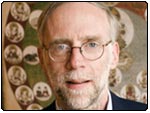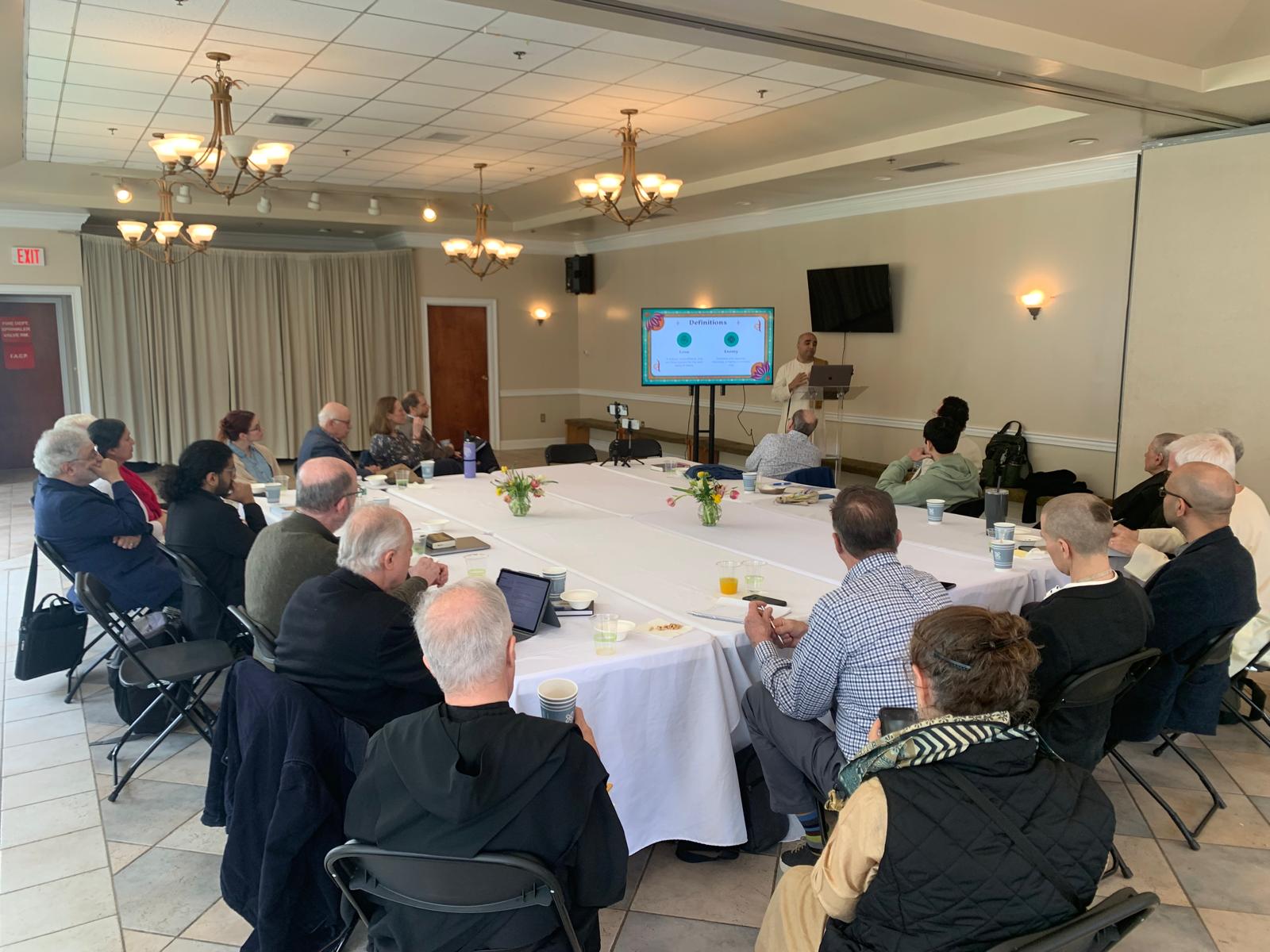A Hare Krishna Swami Tells All
By Francis X. Clooney, S.J. | May 31, 2009

Cambridge, MA. I recently wrote a remembrance of a very old swami, Swami Sarvagatananda of the Ramakrishna Vedanta Society. This time, I write of a middle-aged swami, who is by all accounts still very active in his ministry.
The occasion is that recently I was sent a copy of The Journey Home: Autobiography of an American Swami, and asked if I could review it for a journal. I declined to do an academic review of the book since a) it would be difficult to describe and assess for an academic journal so vivid a first-person account, b) the scholar to do it would have to be expert in the era of spiritual journeys to the East and all kinds of details of religious places and practices in north India, as I am not; c) the book is documentary in a way, and one would also have to draw on the skills of an investigative reporter to report responsibly on what we read. But I trusted the person sending me the book, and I promised that instead I would call your attention to the book in this blog.
It is certainly an interesting story, the spiritual journey of one Richard Slavin who, born in 1950 in Chicago in a Jewish family, goes on a pilgrimage through India when he is about 19 — one among many seekers who went to India in the 1960s and 1970s. His trip was more eventful; he had numerous adventures that are strikingly and entertainingly recounted in the book: large animals, unfriendly policemen, dubious and saintly teachers, exotic spiritual sites, robberies, mishaps on the road, friendships made and lost. Like many a spiritual autobiography, the external events and details turn out to be the setting for the author’s inner quest. His journey is a humbling, learning to be poor, a series of tests that push the author toward living by faith alone. Like any pilgrim, he does not see all of this along the way, but in retrospect sees how he was being quietly, insistently drawn toward God all the time.
After and through it all, he discovers the spiritual path he has followed since, becoming a dedicated swami — an ascetic, teacher, and leader — thereafter to be known as Radhanath Swami. The photographs in the book make all this clear, reminding us of a series of gurus and swamis such as Swami Rama (founder of the Himalayan Institute of Yoga), J. Krishnamurti (wise man, teacher, writer), and Maharishi Mahesh Yogi (who guided the Beatles, among others). He is also pictured with Mother Teresa in one photo, and with the Dalai Lama in another.
Radhanath seems deliberately — in the preface, on the cover — to be quiet about the fact that he is a swami in the International Society for Krishna Consciousness, the Hare Krishnas. Not that he hides the fact, since the climax of the book is after all his encounter with A. C. Bhaktivedanta Swami Prabhupada, charismatic founder of ISKCON. It is wise in a way not to make much of this connection on the cover, and instead to highlight the fact of this very human journey of spiritual discovery and grace. Readers might be distracted, too soon, by the overlay of an exotic tradition that remains ill-understood by most Americans. But to me, it is worth noting that ISKCON is by now a rich spiritual and theological tradition which, despite its difficulties and growing pains along the way, is maturing as a community true to its ancient Indian roots. Thus my decision to draw attention to the ISKCON connection in the title of this piece. Radhanath gives flesh and blood and spirit to ISKCON; this book is a good way to begin to understand what it means to be a Hare Krishna — willing to devote oneself to praise of God (Hare! Krishna!) who is present as Krishna, young, so very near in flesh and blood, loving as he is loved.
I must confess too that the book enabled me to think back on my own spiritual journey; he and I are the same age, and by 18, right in New York City, I had ventured my own life-long commitment to God, a great gift I received. (Readers may recall that I wrote about this last fall.) In a way, we were both saved by a spiritual insight into the love of God that carried us through those tumultuous years, and kept us going until now. In other ways, our lives have obviously been very different: born a Catholic, I am a Catholic; I have never really been on a quest for God, who seems to have been there — here — from the start. I am a professor, and my many visits to India have been by comparison extremely low-key and uneventful; readers of my autobiography would have to put up with descriptions of bookstores, research centers, and pictures of me sitting first at a typewriter, now at my computer.
There is much to be said about Christ and Krishna, of course. For centuries, books have been written on the topic, and Radhanath’s book does not seek to resolve the theological questions that arise when two great monotheistic traditions meet (for I do think ISKCON is a monotheistic form of Hinduism). In such an encounter, however reverently and graciously engaged, those of us who are Catholic will still have tough questions to ask ourselves, about God’s work outside the visible Church, in persons and in traditions. Reflective swamis too will want to ask about the meaning of God’s work in the lives of faithful Christians. But it will help all of us to hear each other’s stories, how God was found, how God finds us when we are young and keeps after us for a lifetime. We should imagine a kind of dialogue — not of religions or theologies this time — but of women and men of different traditions who, upon reaching a certain age, tell their stories with a certain wisdom and humor and in that way speak to one another across religious boundaries. In particular, Radhanath’s account invites us baby-boomers — readers of this blog included — to look a little deeper into how we found, lost, kept, gave away, were given (back) the faith — how we managed to find the 1960s a time of grace and wonder. For this invitation, we can all be grateful to Swami Radhanath. But judge for yourself; take a look at the book, see what you think.












